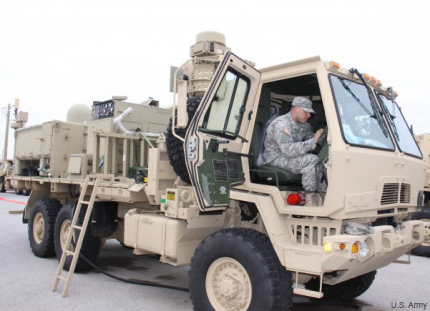Army gets OK for next stage of tactical network
Increment 2 of the Warfighter Information Network – Tactical, being built by General Dynamics, will go into full-rate production.

A WIN-T Increment 2 node.
The Army has received the go-ahead to take the second increment of its high-speed battlefield communications network into full-rate production. The Undersecretary of Defense for Acquisition, Technology and Logistics issued a memorandum authorizing the next stages for the Warfighter Information Network – Tactical (WIN-T) Increment 2, according to an announcement from contractor General Dynamics.
WIN-T is the Army’s effort to eventually extend a command-and-control view—including voice, data and imagery—down to the squad level. Increment 1 of WIN-T takes communications to the battalion level, in at-the-halt environments such as a forward deployed base. Increment 2 put it on-the-go at the company level, with equipment mounted on vehicles such as Mine Resistant Ambush Protected vehicles, High Mobility Multi-purpose Wheeled Vehicles and Strykers.
Increment 3, which will take high-bandwidth communications further out to soldiers the field while adding an air tier, is being developed and tested under a $475 million contract awarded in November 2013 to General Dynamics.
Currently, Increment 2 has been deployed at four division headquarters and 12 brigade combat teams have. General Dynamics said. It has been used in Afghanistan to replace fixed communications infrastructure that was removed when U.S. forces closed their bases there, and last year provided the communications backbone in West Africa during the international response to the Ebola epidemic.
WIN-T is a priority for the Army. Despite an overall decline in recent Defense Department spending, a DOD report in March, which compared spending between December 2013 and December 2014, noted that the Army’s spending on WIN-T had jumped by 36.2 percent.
Working on expanding the tactical network also includes reducing the complexity of network operations and more nodes are added. And as the Army eventually gets to Increment 3, the equipment used for the first two increments will stay in operation at the battalion and company levels, respectively. The Army recently awarded General Dynamics a $36 million contract for maintenance and repair of Increment 1 equipment.